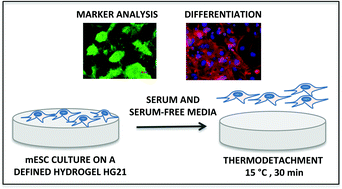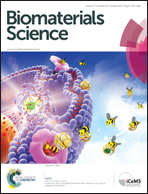Thermoresponsive hydrogel maintains the mouse embryonic stem cell “naïve” pluripotency phenotype†
Abstract
A chemically defined thermoresponsive hydrogel, poly(AEtMA-Cl-co-DEAEA) cross-linked with N,N′-methylenebisacrylamide, which allows enzyme-free passaging, was used as a substrate to culture murine embryonic stem cells (mESCs) under defined and undefined conditions. Analysis of 14 stem cell markers showed that the mESCs remained in a “naïve” state of pluripotency with differentiation potential to form endoderm, mesoderm, and ectoderm derived lineages. These results validate the use of a chemically defined hydrogel for standardised and inexpensive mESC culture.


 Please wait while we load your content...
Please wait while we load your content...